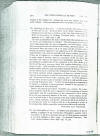
|
Review of The Psychology of Suggestion (1898) The Philosophical Review, 1898, 7, 554. |
The Psychology of Suggestion: A Research into the Subconscious Nature of Man and Society. By BORIS SIDIS, M.A., Ph.D., Associate in Psychology at the Pathological Institute of the New York State Hospitals. With an Introduction by Professor WILLIAM JAMES. New York, D, Appleton & Co., 1898,―pp. x, 386.
The thesis maintained in this book is briefly that in the normal individual two selves are coordinated and blended. The subconscious or secondary self, lacking personality, the slave of suggestion, and the primary, waking self, possessing the essential attribute of personality, self-consciousness. In the hypnotic state, the primary self is set aside, and the secondary self is directly accessible to suggestion; but suggestions, as Dr. Sidis demonstrates experimentally, may reach the secondary self even in waking, normal life, if they are so indirect as to escape the attention of the primary self. In many cases of insanity, there is a separation of the two selves, the secondary self rising to the plane of an independent personality. The psychological accompaniment of this separation is, Dr. Sidis thinks, a retraction of the nerve processes which link together functionally certain groups of cells. Such retraction is known to occur under the influence of certain poisons, and may quite conceivably take place in disease; but after all, this theory leaves untouched the fundamental mystery of hypnotism. Do certain psychical stimuli, suggestions of sleep, etc., operate to bring about an actual retraction of the nerve processes connecting the 'primary self ' cell-groups with those of the 'secondary self '? Or is this separation brought about by the fixation of attention which is an indispensable means of inducing the hypnotic state? Is, then, the physiological accompaniment of attention a retraction of nerve processes, instead of the generally assumed inhibition of nerve functions?
Besides this physiological theory of double consciousness, the experimental methods which the author suggests for the investigation of normal suggestibility and the manifestations of the subconscious self in waking life are the most interesting features of the book. Its last chapters are devoted to a brief study of the psychology of the mob, mediŠval and modern crazes, mental epidemics, and the like; phenomena which are ascribed to the emergencies, under the conditions that go to the forming of a mob, of the irresponsible, highly suggestible, subconscious self in each individual.
MARGARET FLOY WASHBURN